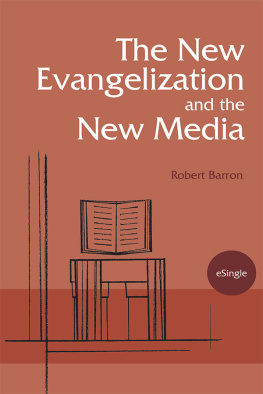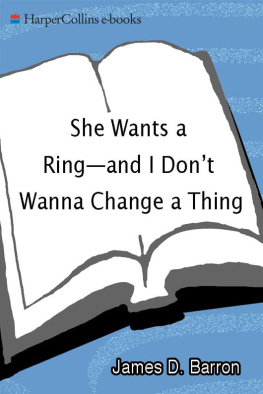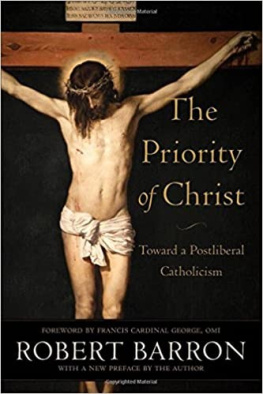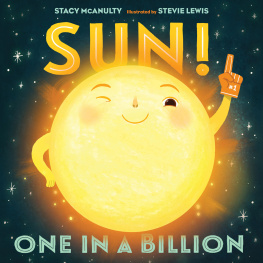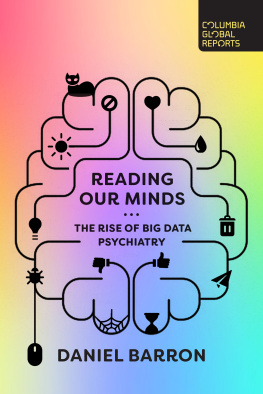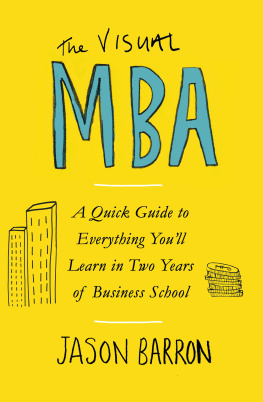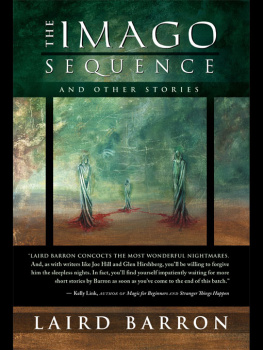Daniel Stacy Barron - There is No Such Thing as Negative Emotion
Here you can read online Daniel Stacy Barron - There is No Such Thing as Negative Emotion full text of the book (entire story) in english for free. Download pdf and epub, get meaning, cover and reviews about this ebook. year: 2014, publisher: Bright Age Publishing, genre: Religion. Description of the work, (preface) as well as reviews are available. Best literature library LitArk.com created for fans of good reading and offers a wide selection of genres:
Romance novel
Science fiction
Adventure
Detective
Science
History
Home and family
Prose
Art
Politics
Computer
Non-fiction
Religion
Business
Children
Humor
Choose a favorite category and find really read worthwhile books. Enjoy immersion in the world of imagination, feel the emotions of the characters or learn something new for yourself, make an fascinating discovery.

- Book:There is No Such Thing as Negative Emotion
- Author:
- Publisher:Bright Age Publishing
- Genre:
- Year:2014
- Rating:5 / 5
- Favourites:Add to favourites
- Your mark:
- 100
- 1
- 2
- 3
- 4
- 5
There is No Such Thing as Negative Emotion: summary, description and annotation
We offer to read an annotation, description, summary or preface (depends on what the author of the book "There is No Such Thing as Negative Emotion" wrote himself). If you haven't found the necessary information about the book — write in the comments, we will try to find it.
There is No Such Thing as Negative Emotion — read online for free the complete book (whole text) full work
Below is the text of the book, divided by pages. System saving the place of the last page read, allows you to conveniently read the book "There is No Such Thing as Negative Emotion" online for free, without having to search again every time where you left off. Put a bookmark, and you can go to the page where you finished reading at any time.
Font size:
Interval:
Bookmark:
DANIEL STACY BARRON
Enlightenment of the human emotional body

The opinions expressed in this manuscript are solely the opinions of the author and do not represent the opinions or thoughts of the publisher. The author represents and warrants that s/he either owns or has the legal right to publish all materials in this book. If you believe this to be incorrect, contact the publisher through their website.
There is no such thing as negative emotion
All rights reserved
Copyright 2013 DS Barron
First printed 2005
Revised April 2014
This book may not be reproduced, transmitted, or stored in whole or in part by any means, including graphic, electronic, or mechanical without the expressed written consent of the publisher except in the case of brief quotations embodied in critical articles and reviews.
Emotional Body Enlightenment (EBE) and Theohumanity are registered service marks of DS Barron
Cover art by Brie Ehret Barron and Frank Fienbork
Layout by Brie Ehret Barron and Kelly Hay
Biography photo by Bryan DeVore
Printed and published by Bright Age Publishing LLC
www.brightagepublishing.com
ISBN: 978-1-938736-10-0
ebook ISBN: 978-1-938736-11-7
Library of Congress Control Number: 2009925517
No monies were provided by Project Theohumanity for publicity or distribution of this book or by any other non-profit or funding source.
Printed in the United States of America
This book is dedicated to the end of the idea that our humanity must be transcended in any form to achieve spiritual maturity, and with it, the spiritual teachings of the ages, east and west, that have split our divinity from our human selves. Heartfelt acknowledgments to all those who have experienced EBE in part or in full, who by their courageous willingness to learn when their personal will was coming from unconscious inauthenticity or conscious emotive maturity, helped forge its premises and process into embodiable everyday lived truths.
Daniel Stacy Barron
.......... when you are a child who is unwanted or unwelcome, and the essence of what you are seems to be unacceptable, you look for an identity that will be acceptable. You make a habit of studying people, finding out the way they talk, the answers they give and their points of view; then, in a form of self-defense, you reflect whats on their faces and how they act because most people like to see reflections of themselves.....
Marlon Brando
Songs my mother taught me
But if in your fear you would seek only loves peace and loves pleasure, then it is better that you cover your nakedness and pass out of loves threshing-floor, into the seasonless world where you shall laugh, but not all of your laughter, and weep, but not all of your tears.
The Prophet by Kahlil Gibran
We all suffer, and as a result then consciously or unconsciously, passively or actively, add to the suffering in others.
Jesus taught that if we would but bring out what was within us, what was within us would save us, but that if we did not bring out what was within us, what we did not bring out would destroy us. Two thousand years later, Jung warned us our shadow would rule us if we stubbornly resisted and thus remained unconscious of its truths.
Its not often appreciated both men are saying exactly the same thing.
Because the religious and psychological traditions so indelibly affected by the teachings of these two men have always defined the root cause of suffering differently, theyve also designed different means to alleviate it. But the context within which we build all of our ideas, including those concerning the cause of human suffering, is always a function of our paradigm, world-view, or reality-picture through which we view life.
Change the lens and we change what we see. Change what we see and we can change what to do about what we see.
In this sense, we have only two responses possible to our suffering upon which almost all psychotherapeutic, philosophical, and spiritual methods are based: association or dissociation. We can dissociate, transcend, try to control, pave over, see as irrational, philosophize, perspectivize, or otherwise avoid feeling the true depths of our inner pain. Virtually all authorities, especially spiritual teachers, employ some version of this track, even when they supposedly support feeling conflicted or shadow-based emotions, because they only support experience of their downstream symptomatic conscious versions, not the upstream source of the unconscious roots of why we possess them in the first place.
The other choice is to confront, go deeper into, and work through our emotional pain by associating fully with it deeply at the level of cause, not symptom. But as this book will argue, weve never been given effective means by any psychological, philosophical, or spiritual paradigm to productively associate with inner pain at the level of unconscious causal source. Instead, weve been given coping mechanisms, transcendence of negative emotions, behavioral modification, cognitive-based strategic dissociation techniques, or ineffective associational venting mechanisms for the conscious version of our emotional conflict offered by psychology, psychiatry, spiritual, and affirmational new age therapies.
Despite our individual uniqueness and cultural, genetic or psychodynamical differences and conditonings, our human physical digestive systems are all sufficiently alike to be able to absorb a similar range of food. Just so, Emotional Body Enlightenment (EBE), the emotional body healing practice whose philosophical premises are offered in this work, maintains that every human being is equipped with the same emotional digestive system. We all share the same emotional body architecture whose necessary food is a radical new way of understanding what we mean by the validation and love all of us require for emotional health, and how the lack of that food directly affects the emotional body.
EBE, or Emotional Body Enlightenment, is a rigorous spiritual practice for enlightenment of the human emotional body in the same way buddhist nondual practice results in enlightenment of the mental body. Even though it directly confronts the shadow of the human psyche and redefines the criteria for psychoemotional maturity, EBE is not psychotherapy and cannot be compared to any therapeutic modality because of the radical difference in EBEs overall paradigm out of which its practices arise and the specific healing processes it offers. EBE is the first dharma in history to decode the subconscious and give access to unconscious and existential-level emotional landscapes in the form of very real and dynamic subpersonalities whose architectures and textures go far beyond other commonly known traditional or alternative subself-based therapies and interventions.
In this way, EBE is not about strengthening the present forms and structures of ones life. EBE offers a way to actually process and heal toxic familial, cultural, and religious conditioning with no transcendental algorithm, by looking at our attachments to all aspects of our life as addictions, including addictions to buddhism and other forms of Dark Age practices. It is instead about being willing to dismantle any and all aspects of life that have been unconsciously employed to keep us strategically safe, secure, and able to cope with the challenges of life.
EBE is thus not for anyone in crisis or looking for short-term relief. It is about consciously prioritizing and creating manageable mini-crises of identity that undermine ones sense of strategic self and self-image, and with it, strip away all stable forms of life that serve to mask our most authentic version of life. To be able to bear this, you must be ready to lose everything dear to you in the context that all such outer aspects of life are sourced to some degree by unhealed inner woundedness. This is something only a very small percentage of people are able or willing to do.
Next pageFont size:
Interval:
Bookmark:
Similar books «There is No Such Thing as Negative Emotion»
Look at similar books to There is No Such Thing as Negative Emotion. We have selected literature similar in name and meaning in the hope of providing readers with more options to find new, interesting, not yet read works.
Discussion, reviews of the book There is No Such Thing as Negative Emotion and just readers' own opinions. Leave your comments, write what you think about the work, its meaning or the main characters. Specify what exactly you liked and what you didn't like, and why you think so.


